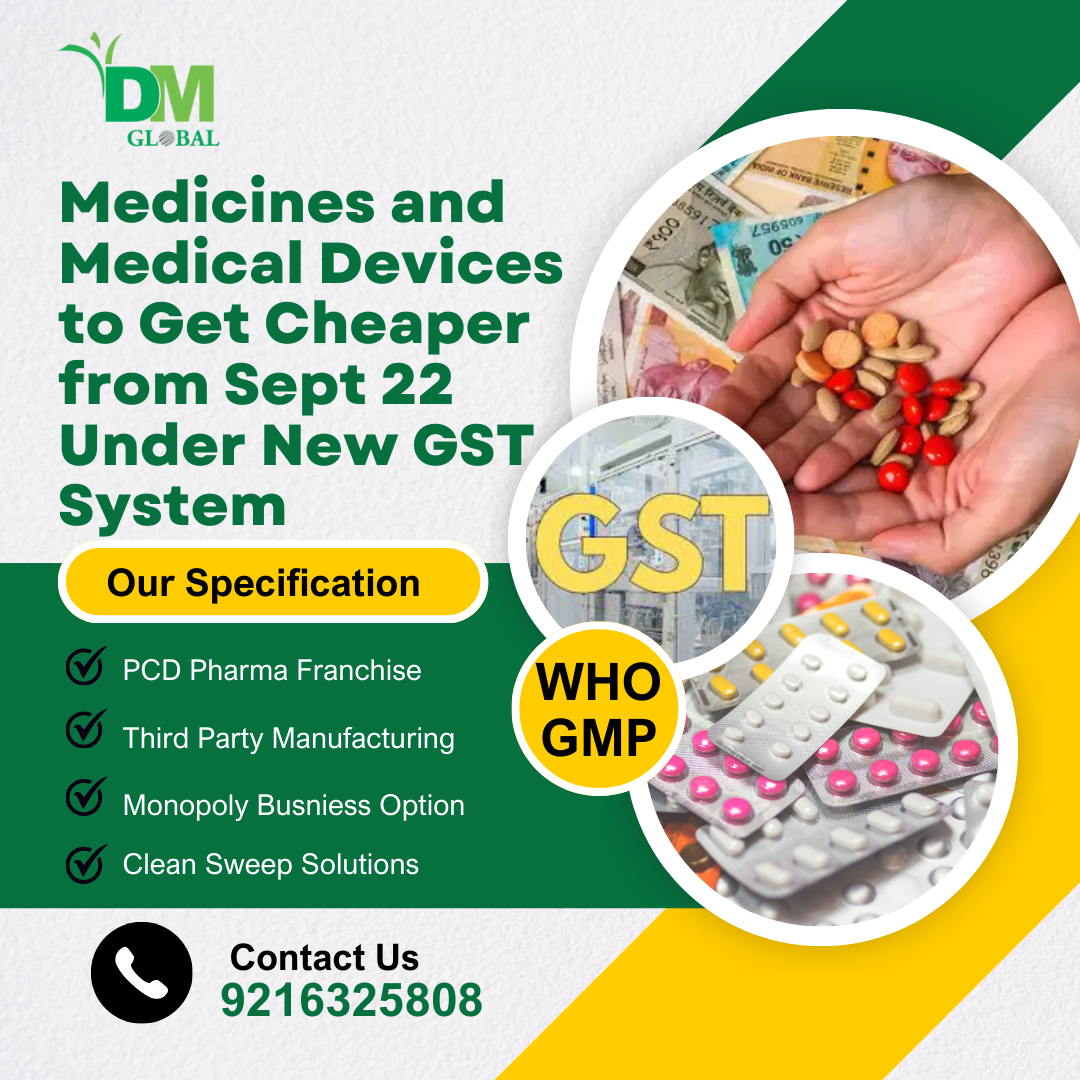Government of India has gone a long way towards ensuring that healthcare becomes affordable to millions of people. Under the revised regime, medicines, medical devices, and formulations will be made cheaper starting September 22, 2025, in accordance with the revised regime of Goods and Services Tax (GST). The move will offer significant relief to patients who are usually unable to cope with the increasing medical costs.
Why Is This Change Important?
Medical expenses in India are often a heavy burden for families, especially in cases of chronic diseases such as cancer, asthma, or diabetes. By lowering the GST rates, the government aims to ensure that these savings are passed on directly to consumers and patients.
The NPPA has clearly stated that companies should not delay in making these changes. Manufacturing and marketing firms have been directed to take immediate steps to spread awareness among dealers, retailers, and consumers through newspapers, social media, and electronic communication.
This move shows the government’s intention to strike a balance between industry interests and the welfare of the common man.
No Recall of Old Stocks
Ministry of Chemicals and Fertilizers has elucidated that businesses are not expected to recall, re label or re-sticker medicines and devices already existing in the market prior to September 22. They instead should make sure that the retailers adhere to the new pricing regulations.
GST Reductions Across Medicines and Medical Devices
The revised GST structure brings major benefits for essential drugs and medical devices:
-
Drugs previously under the 5% GST slab are now tax-free (nil GST).
-
Medicines earlier charged at 12% GST have been reduced to 5%.
-
Medical essentials like wadding, gauze, bandages, dressings, adhesive plasters, and surgical products will now attract 5% GST instead of 12%.
-
Critical drugs used for the treatment of cancer and asthma have also been moved from the 12% to the 5% GST slab.
These reductions will make life-saving treatments and basic medical care more accessible to patients across the country.
Personal Care Products Also Cheaper
In addition to medicines, several daily-use personal care items will now be cheaper under the new GST regime. Products such as toothpaste, toilet soap, shaving cream, face powder, shampoo, hair oil, and aftershave lotion have seen a reduction in GST from 18% to just 5%.
This move is expected to benefit not only patients but also general consumers by reducing overall household expenses.
Impact on Pharma Industry
The reduction in GST rates has direct implications for the pharmaceutical sector. For pharma contract manufacturing company businesses, the demand for affordable drugs is likely to grow. Lower taxes will encourage higher production volumes, creating more opportunities for manufacturers and exporters.
Additionally, companies working as monopoly medicine company in India will also benefit. Since they enjoy exclusive rights to sell specific medicines in certain regions, their products will become more attractive and competitive due to reduced prices. This may open up larger markets for franchise owners and distributors.
Ensuring Compliance and Awareness
The success of this policy depends on strict compliance by pharma companies. Authorities have urged businesses to use all possible channels to educate retailers and consumers about revised prices. This includes:
-
Advertising through newspapers and magazines.
-
Using digital platforms like websites and social media.
-
Training and informing distributors and retailers about the changes.
By spreading awareness, the government wants to ensure that the reduced GST benefits are not lost in the supply chain but reach the patients who need them the most.
Broader GST Council Reforms
This step also aligns with India’s long-term goal of improving public health access and strengthening the healthcare ecosystem.
Conclusion
The move to lower GST on medicines, formulations, and medical devices beginning September 22, 2025, is a breakthrough to both the patients and pharmaceutical industry. It reduces expenditures on treatment, guarantees the increased access to low-cost healthcare items, and opens prospects that allow pharma businesses to increase their market.
In short, the new GST regime is a win-win situation: patients save money, and the pharma sector gets a boost in growth and trust.

